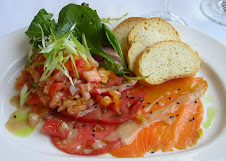
Chocolate has become one of the trendiest flavors in the world. It is a ordinary ingredient in many snacks and deserts, including cookies, cake, ice cream, pudding, pieand candy. Several types of chocolate can be distinguished. Pure, unsweetened chocolate contains primarily cocoa solids and cocoa butter in varying size. Much of the chocolate consumed today is in the form of sweet chocolate, combining chocolate with sugar. Milk chocolate is sweet chocolate that in addition contains milk powder or condensed milk. "White chocolate" contains cocoa butter, sugar, and milk but no cocoa solids. Dark chocolate is formed by adding fat and sugar to the cacao mixture. Unsweetened chocolate is pure chocolate liquor, also known as bitter or baking chocolate. It is unadulterated chocolate: the pure, ground, roast chocolate beans impart a strong, deep chocolate flavor.




 It is not special for business, or sometimes individual, customers to subscribe to a
It is not special for business, or sometimes individual, customers to subscribe to a 























